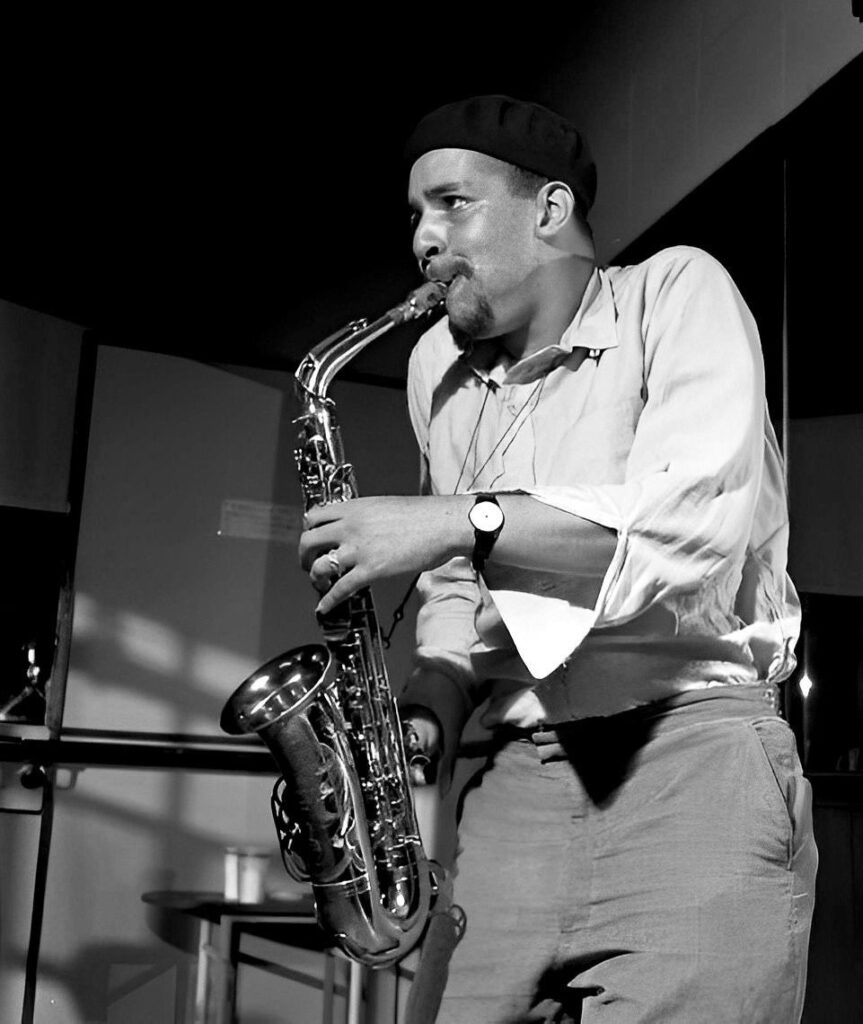Dive into the Power & Passion of ‘Tenor Madness
In the vast panorama of jazz, Sonny Rollins’ “Tenor…
“Bluesnik” – a gem from the New York jazz scene of the 1960s – stands as a testament to the musical brilliance of Jackie McLean and his band of intrepid musicians. This album, recorded on January 8, 1961, and released by Blue Note Records in February 1962, showcases the artistry of McLean on alto sax, Freddie Hubbard on trumpet, Kenny Drew on piano, Doug Watkins on bass, and Pete La Roca on drums. The sessions took place at the revered Van Gelder Studio in Englewood Cliffs, New Jersey, under the careful ear of Rudy Van Gelder himself.

Jackie McLean, born in 1932, had already made a name for himself by the time “Bluesnik” was recorded. He had played with jazz legends such as Miles Davis, Charles Mingus, and Art Blakey. In the years leading up to this session, McLean had embarked on a prolific series of Blue Note albums, recorded from 1959 to 1967. Each album exhibited his growth and maturation as an artist, and “Bluesnik” was no exception.
Freddie Hubbard, on the other hand, was still in his early 20s during the recording of “Bluesnik.” Despite his youth, he had already gained considerable acclaim for his work on Blue Note recordings, both as a leader and a sideman. His albums “Open Sesame” and “Goin’ Up” showcased his exceptional trumpet skills and assured execution. Hubbard’s playing on “Bluesnik” demonstrates his ability to convey powerful emotions without wasted notes or unnecessary flourishes.

Kenny Drew, Doug Watkins, and Pete La Roca rounded out the ensemble. Drew, a pianist with a talent for the blues, contributed several original compositions to the album. Watkins, hailing from Detroit, had honed his craft as a bassist with Art Blakey’s Jazz Messengers. La Roca, influenced by Philly Joe Jones and Elvin Jones, had made his recording debut on a Sonny Rollins album and was quickly becoming known as one of the most dynamic young drummers in jazz.

The title track, “Bluesnik,” is a highly charged number that exemplifies the adventurous spirit of this album. McLean’s playing is rhythmically and emotionally bold, while Hubbard’s urgent, fiery trumpet solos complement the alto sax perfectly. Drew’s articulate piano work propels the song forward, making it a standout on the album.
My personal favorite track on “Bluesnik” is “Drew’s Blues,” a Kenny Drew original composition. The song’s easy, loping tempo provides a perfect canvas for the musicians to paint their stories in shades of blue. Each musician digs deep into their well of emotion, creating a rich, evocative soundscape that resonates with listeners long after the final note has been played.

“Blues Function,” written by Freddie Hubbard, is another noteworthy track. Hubbard’s concise, economical playing is followed by McLean’s heartfelt, pleading alto sax. Drew’s piano solo reveals the influence of John Coltrane on his playing, as he navigates the blues with skill and finesse.
The musical style of “Bluesnik” can be characterized as blues-based, explorative, and emotionally charged. McLean and his fellow musicians use the blues as a foundation upon which they build innovative and passionate performances. The album serves as a shining example of the emotional intensity and creative spirit that defined the New York jazz scene in the 1960s.
Upon its release, “Bluesnik” was well-received for its blues focus and the passionate performances of its musicians. The album helped to further establish McLean’s reputation as a formidable talent and contributed to the growing appreciation of Hubbard, Drew, Watkins, and La Roca. It stood as a testament to the importance of the blues in the jazz tradition and showcased the musicians’ ability to infuse their performances with raw emotion and innovative techniques.
Today, “Bluesnik” is viewed as a classic album in the hard bop and post-bop era. It remains significant for its honest and powerful expression of the blues, as well as the incredible musicianship displayed by the ensemble. The album serves as a snapshot of a pivotal moment in jazz history when a new generation of musicians were pushing the boundaries of the genre and embracing the blues in their own unique way.
In conclusion, Jackie McLean’s “Bluesnik” is a masterpiece that continues to captivate and inspire listeners for more than six decades after its initial release. The album is a testament to the timeless power of the blues and the extraordinary talent of McLean and his fellow musicians. As we listen to “Bluesnik,” we are transported back to a time when the New York jazz scene was alive with creativity, emotion, and innovation – a time that will forever be remembered through the music of Jackie McLean and his peers.